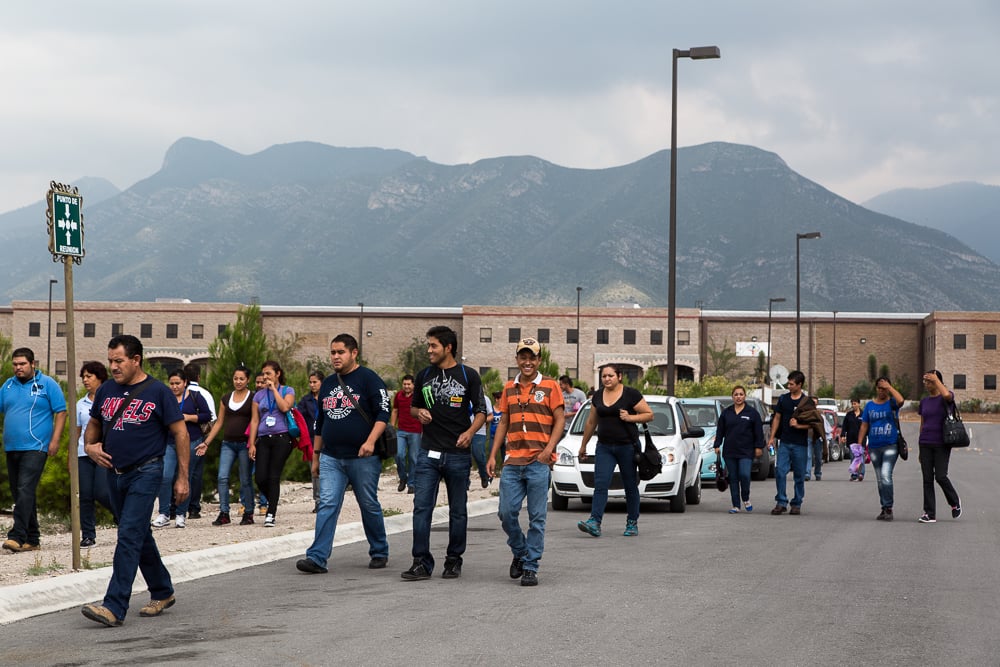There are many qualities to Mexico that make the country an ideal location for manufactures: It is strategically located close to the U.S., Canada and Latin America, its government has invested massively in infrastructure and education, labor is skilled and inexpensive and cultural similarities make conducting business there quite simple.
However, one of the key drivers of manufacturing growth in Mexico is the country's expansive free trade agreements, which have completely transformed its economy and industry. In fact, The Observatory of Economic Complexity reported Mexico is currently the 13th largest export economy in the world and in 2016, the country exported $373 billion worth of goods and imported a total of $380 billion.
"Mexico boasts a network of 13 FTAs with 45 different counties."
As ProMexico pointed out, Mexico boasts a network of 13 FTAs with 45 different countries, 32 Reciprocal Investment Promotion and Protection Agreements with 33 countries, and 9 trade agreements within the framework of the Latin American Integration Association. As a result, Mexico has access to over 60 percent of the world's gross domestic product. To gain a fuller understanding of Mexico's participation in global trade and its value as a location for manufacturing and exporting, it is helpful to know each of the FTAs it participates in:
1. The North American Free Trade Agreement
NAFTA is perhaps the most important FTA Mexico participates in, as when it was made effective in 1994, the country's economy completely changed. At the time NAFTA went into effect, roughly 70 percent of items entering the U.S. from Mexico and 50 percent of goods entering Mexico from the U.S. did so on a duty-free basis. Conversely, fifty percent of U.S. products entering Mexico did so in a similar fashion. Today, manufacturers in Mexico can export and import goods across the border tariff free.
2. The G3 Free Trade Agreement
The G3 is a FTA between Mexico, Colombia and Venezuela that went into effect in 1995 and committed a 10 percent tariff reduction over a 10-year period among the participating countries. In 2006, Venezuela withdrew from the agreement.
3. The Mexico - Costa Rica Free Trade Agreement
Under this agreement, which went into effect in 1995, 99 percent of exported products from each country were subject to preferential duty-free access.
4. The Mexico - Nicaragua Free Trade Agreement
Similar to other FTAs, this particular agreement, which went into effect in 1998, resulted in a gradual phase-out of tariffs over a 15-year period.
5. The Mexico - Chile Free Trade Agreement
The agreement between Mexico and Chile went into effect in 1999 with the aim of creating a free trade area with the following objectives:
- Promote diversified trade.
- Eliminate barriers to international trade and exports.
- Create conditions for fair competition.
- Increase bilateral foreign direct investment opportunities.
- Protect intellectual property rights.
6. The Mexico - European Union Free Trade Agreement
Although negotiations on the Mexico EU Free Trade agreement began in October of 1996, the accord was not ratified until July 1, 2000. It was the first North American or South American FTA adopted by the European Union. The goal was, from the European perspective, to gain greater Mexican market access for EU companies. Similarly, Mexico hoped the agreement would help the country earn more federal direct investment from Europe in the form of low-cost manufacturing.
7. The Mexico - Israel Free Trade Agreement
The Mexico Israel Free Trade agreement was implemented in 2000 after two years of negotiation on the same day the Mexico EU trade deal went into effect. The agreement eliminated 100% of duties on trade between Israel and Mexico by 2005.
8. The Mexico - European Free Trade Association Agreement
Mexico signed an agreement with the EFTA countries (Iceland, Lichtenstein, Switzerland and Norway) on November 20, 2007. This signified the first FTA the EFTA countries participated in with a country outside of themselves. When the accord was struck, the average tariff on Mexican goods entering these countries was 8 percent. Six years after the agreement was signed, all four countries achieved duty-free importation of Mexican goods. According to the EFTA's most recent annual report, the four leading countries have expressed interest in further trade negotiations with Mexico.

Mexico's free trade agreements make manufacturing in the country advantageous to businesses.
9. The Mexico - El Salvador, Guatemala and Honduras Free Trade Agreement
Mexico entered into a free trade agreement with its aforementioned Central American neighbors that was adopted and implemented in 2001. The effective date for the commencement of the trade pact with El Salvador and Guatemala was on March 15th of that year, while the provisions were not applicable to the trade relationship between Mexico and Honduras until June 1st. This agreement is often referred to as the Mexico Northern Triangle Agreement, and was the culmination of movement towards a free trade relationship between these countries that had begun in 1992.
10. The Mexico - Japan Free Trade Agreement
Mexico and Japan opened their doors to trade when their FTA was ratified in 2004. Japan initiated this deal because it was lagging behind the U.S. and Europe in terms of access to the Mexican market. By the end of 2015, tariffs will be eliminated on 90% of goods that account for 96% of the total trade that transpires between the two countries.
11. TLC Unique
This agreement signifies the completion of a FTA between Costa Rica, El Salvador, Guatemala, Honduras and Ecuador when Chile and Nicaragua implemented a bilateral protocol to ratify the deal in 2012.
12. The Mexico - Peru Free Trade Agreement
Mexico and Peru signed a free trade agreement on June 6, 2011, which became effective in 2012 and allowed preferential access to over 12,000 products, such as canned fish, cookies, timber, shrimp, and other products.
13. The Mexico - Panama Free Trade Agreement
In 2014, Mexico and Panama signed a FTA, which moved Panama much closer to joining a regional pact between Mexico, Colombia, Chile and Peru.
Mexico's free trade agreements have launched the country forward as a competitive manufacturing destination and a large player in the global economy. Businesses that expand there will reach the financial and strategic benefits of tapping into the country's liberalized trade policies and positive relations with countries across the globe.
Subscribe
Sign up and stay informed with tips, updates, and best practices for manufacturing in Mexico.





